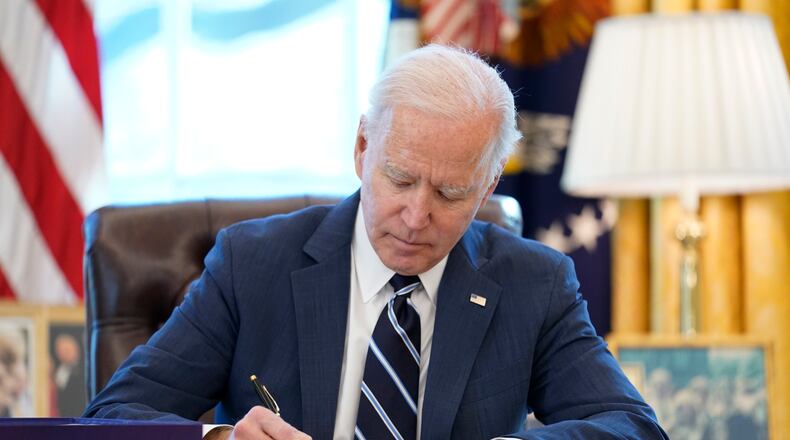The first round of ARPA Coronavirus State and Local Fiscal Recovery Funds came in June 2021. Now the General Assembly is hurrying to pass a bill to distribute the second round — but with some changes that allow funding directly to smaller governmental units and broader use of the money. That includes reallocation of $1.7 million that remains unspent from the first round.
State Reps. Thomas Hall, R-Madison Twp., and D.J. Swearingen, R-Huron, introduced House Bill 377 in August. It passed the House 75-9 last week and is heading to the Senate Finance Committee, where it had an informal hearing last week. Committee Chair Matt Dolan, R-Chagrin Falls, said when the bill is formally referred that will count as its official first hearing.
The federal Office of Management and Budget will disburse the funds to local governments in accordance with the American Rescue Plan Act, Hall told the Finance Committee.
In the first round of funding, authorized in Ohio as House Bill 168 last year, there was some discrepancy between federal and state definitions of local governments, he said. Leaving out entities such as townships would be a “huge detriment,” Hall said.
Hall noted that many Republicans did not support ARPA but said it’s now an “issue of fairness” to distribute the money equitably throughout the state.
Dolan said he believed if an individual local government rejects the federal money, those funds wouldn’t disappear or go to other states but would be redistributed elsewhere in Ohio.
“That is my understanding as well,” Hall said.
Answering state Sen. Vernon Sykes, D-Akron, Hall said the deposit from the U.S. Treasury could come in “a matter of days” and could be distributed quickly once a new state authorization is passed.
“It is my understanding that these funds do not have to wait the full 90 days pending the governor’s signature on this legislation,” he said.
Speaking to the full House on Wednesday, Hall said the bill authorizes direct payments to states, counties and cities of more than 50,000. Other local governments, such as townships, will get money as pass-through funding from those larger entities.
“The purpose of this bill is to match the stated intent of Congress to provide recovery dollars to all local governments,” he said.
State Rep. Daniel Troy, D-Willowick, said local health districts, which incurred many expenses from COVID-19, still aren’t eligible. Funding them should be considered too, he said.
The initial $422 million allocation was restricted to certain uses, but the new funding can be used in more ways, Hall said.
“In the most recent guidelines that the Treasury has sent out for the ARPA funds, they have broadened a lot of those guardrails and guidelines,” he said.
The first allocation of COVID-19 relief funds, totaling $350 billion nationwide, went for uses such as vaccine incentives, affordable housing, and water infrastructure, according to the final federal rules for the second round.
Federal authorities got lots of feedback and made some changes. Now local governments no longer have to directly calculate how much revenue they lost due to the pandemic; instead they can choose to claim a standard allowance of up to $10 million.
The second funding round can be used for capital projects related to public health or “economic response” to COVID-19.
“For example, recipients may build certain affordable housing, childcare facilities, schools, hospitals, and other projects consistent with final rule requirements,” the federal rule says. That includes lead-pipe replacement and stormwater management.
The broadened uses include community development and neighborhood revitalization for “disproportionately impacted communities,” as well as educational services to deal with pandemic-related learning loss.
Governments can also use the money to hire people, potentially paying more than before the pandemic, and boosting people who took pay cuts or furloughs.
About the Author

